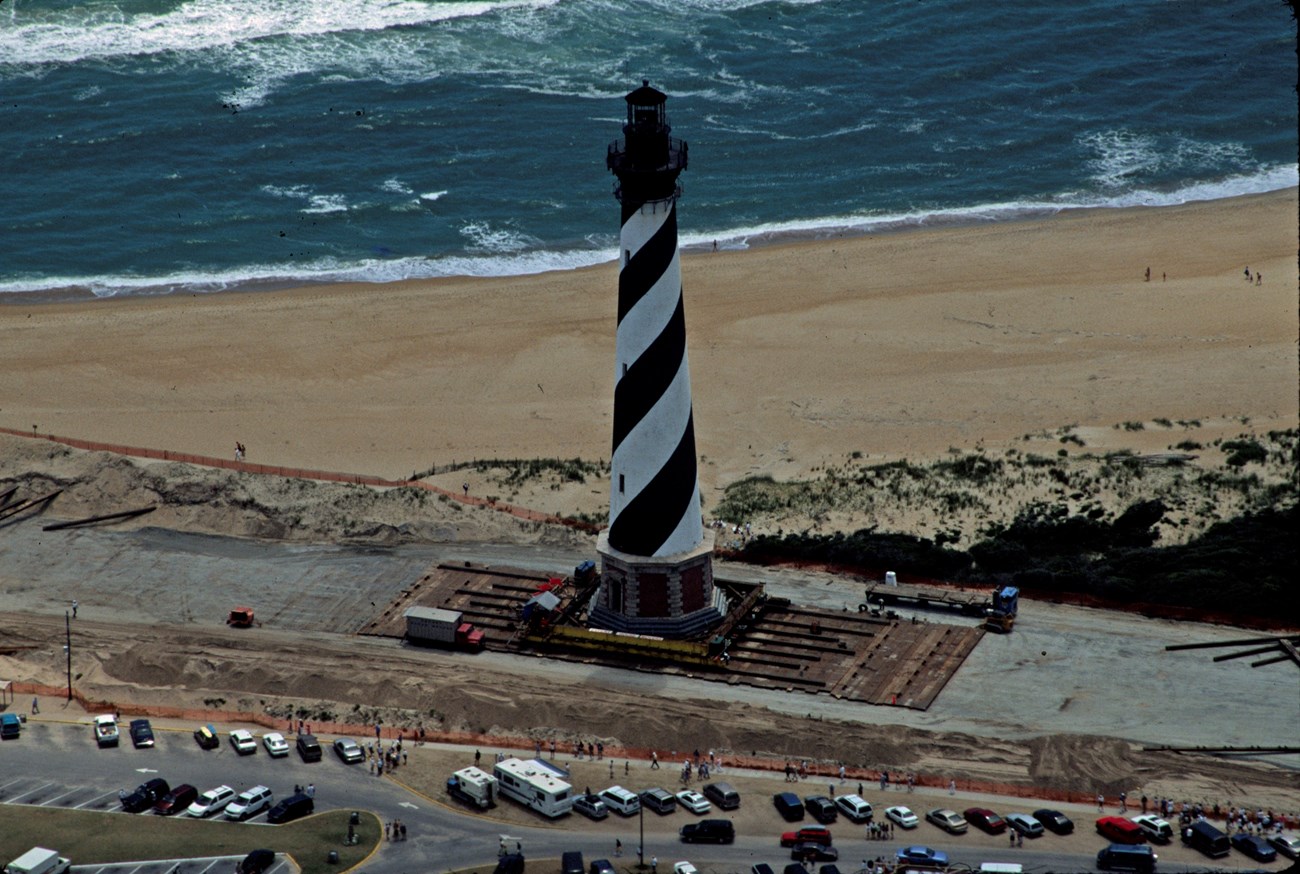Last updated: April 5, 2019
Article
Coastal Engineering—Redesign, Relocation, and Abandonment
Redesign, relocation, or abandonment of a park resource may, in some instances, be the greatest option to allow the natural coastal processes such as erosion, deposition, and shoreline migration to continue without interference. These techniques are site dependent but may eliminate pressure to engineer the environment, which can cause long lasting damage to natural systems.
Redesign

NPS photo.
Adapting the design of a structure to changing conditions is a viable alternative to coastal engineering. Often, adaptation is reactive and occurs after a disastrous event such as storm surge flooding, however, precautionary redesign may provide resistance during an event. For example, electrical systems at Ellis Island, which is part of the Statue of Liberty National Monument, New York were damaged in flooding during the 2012 Hurricane Sandy. A failed climate control system left many items in the museum collection susceptible to damage. Innovative upgrades to standard electrical panels are now in place to withstand future inundation at Ellis Island. Elevating a structure or the re-engineering of a specific facility feature (e.g. elevating boilers from base-level locations) to be suitable for projected conditions are other ways to adapt along the coastlines. Redesign may be a viable option for historic structures strongly tied to their location, such as those vulnerable to flooding in Acadia National Park, Maine. However, redesign may not be a permanent solution as shoreline vulnerability increases, and additional methods such as relocation should be considered. Proactively, relocation abilities can be built into the adaptive qualities of new structures. For example, eco-tents at Everglades National Park are unique visitor facilities designed to be portable and can be moved in advance of storms.
Relocation

NPS photo.
Relocation, or “managed retreat”, of a park resource may be appropriate in place of hard stabilization structures or intermittent beach nourishment projects. Relocation involves transporting a structure from a vulnerable area to a more stable location and is typically a more permanent solution than many coastal engineering techniques. Managed retreat can significantly reduce the structure’s vulnerability to threats, such as damage from wave impact, undermining by shoreline erosion, and sea level rise while benefiting natural resources by allowing the shoreline to migrate and function naturally. The relocation of lighthouses has occurred in multiple national parks, such as the iconic retreat of the Cape Hatteras Lighthouse 2,900 feet inland of the migrating barrier island shoreline at Cape Hatteras National Seashore. It is important to note that managed retreat may impact natural resources in the structure’s new location and cause a loss of historical context in the case of historical structures.
Abandon in Place
The benefits of abandoning a structure in place may outweigh the negative impacts on surrounding resources resulting from coastal protection. When it comes to restoring existing shoreline armor, the current or future conditions of a shoreline may be different from when the protective structure was built. Allowing no longer effective shoreline protection structures to deteriorate may eventually result in the re-establishment of coastal landforms. However, abandonment can cause the loss of historical value of the structure and create the potential for hazardous debris.
Related Links
- Acadia National Park, Maine—[Geodiversity Atlas] [Park Home]
- Cape Cod National Seashore, Massachusetts—[Geodiversity Atlas] [Park Home]
- Cape Hatteras National Seashore, North Carolina—[Geodiversity Atlas] [Park Home]
- Everglades National Park, Florida—[Geodiversity Atlas] [Park Home]
- Statue of Liberty National Monument, New York—[Park Home]
- Moving the Cape Hatteras Lighthouse
- Coastal Adaptation Case Study 15: Rehabilitating Stream Crossings on Historic Roads, Acadia National Park, Maine
- Coastal Adaptation Strategies Handbook & Case Studies
